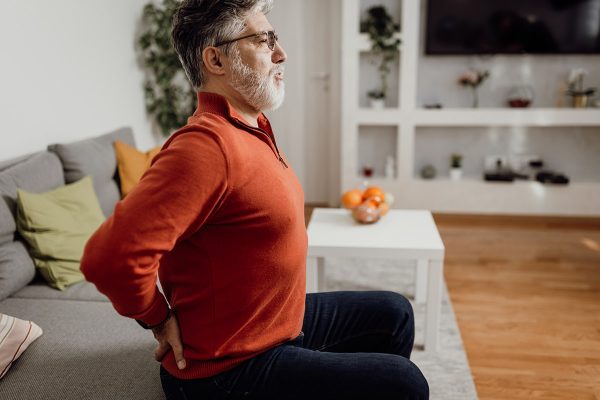
Lumbar stenosis is a common condition that affects many people, especially as they age. Characterized by a narrowing of the spinal canal in the lower back, it can lead to symptoms such as pain, numbness, and weakness in the legs. For those diagnosed with lumbar stenosis, finding effective and rapid relief is often a top priority. This blog post will explore the fastest ways to recover from lumbar stenosis and how CARESPACE’s multidisciplinary approach can play a crucial role in your recovery.
Understanding Lumbar Stenosis
Lumbar stenosis occurs when the spaces within your spine narrow, which can put pressure on the nerves that travel through the spine. This narrowing can be due to several factors, including:
- Aging: The wear and tear of aging can lead to spinal changes, such as thickened ligaments and bone spurs.
- Arthritis: Osteoarthritis and rheumatoid arthritis can cause inflammation and lead to stenosis.
- Herniated Discs: Discs that bulge or rupture can compress the spinal cord or nerves.
- Genetic Conditions: Some people are born with a narrower spinal canal.
The symptoms of lumbar stenosis can vary from mild to severe and may include:
- Lower back pain
- Numbness or tingling in the legs or feet
- Weakness in the legs
- Difficulty walking or standing for long periods
Fastest Ways to Recover from Lumbar Stenosis
Recovery from lumbar stenosis doesn’t heal naturally and often involves a combination of treatments aimed at relieving symptoms and improving mobility. Here are some of the fastest and most effective methods:
1. Physiotherapy
Physiotherapy is a great treatment option for lumbar stenosis. A skilled physiotherapist can design a personalized exercise program to strengthen the muscles supporting the spine, improve flexibility, and enhance mobility. Key components of physiotherapy for lumbar stenosis include:
Stretching Exercises: To improve flexibility and reduce tension in the lower back.
Strengthening Exercises: Focused on the core and lower back muscles to provide better support for the spine.
Aerobic Exercises: Low-impact activities such as walking or swimming can help improve overall fitness without putting excessive strain on the spine.
2. Chiropractic Care
Chiropractic care can be highly effective in managing lumbar stenosis. Chiropractors use hands-on spinal manipulation and other techniques to improve spinal function and alleviate pain which all helps in the healing of lumbar stenosis. Chiropractic treatments can help:
Reduce Pain: Through spinal adjustments that relieve pressure on the nerves as lumbar stenosis can be very painful.
Improve Mobility: By restoring proper alignment and function to the spine.
Enhance Overall Well-Being: By addressing musculoskeletal issues that may be contributing to the symptoms.
3. Medication
Over-the-counter pain relievers, such as nonsteroidal anti-inflammatory drugs (NSAIDs), can help manage pain and inflammation. In some cases, doctors may prescribe stronger medications, such as muscle relaxants or nerve pain medications.
4. Injections
Epidural steroid injections can provide temporary relief from pain by reducing inflammation around the affected nerves. These injections are often used when other treatments have not provided sufficient relief.
5. Lifestyle Modifications
Making certain lifestyle changes can help manage symptoms and prevent further progression of lumbar stenosis. These modifications may include:
Weight Management: Maintaining a healthy weight can reduce stress on the spine.
Ergonomic Adjustments: Ensuring proper posture and ergonomics at work and home.
Activity Modifications: Avoiding activities that exacerbate symptoms and incorporating more back-friendly exercises.
How CARESPACE Can Help
At CARESPACE Health+Wellness, we offer a comprehensive, multidisciplinary approach to managing lumbar stenosis. Our team of regulated health professionals works together to create personalized, coordinated care plans designed to address the root causes of your condition and provide fast, effective, and long-lasting results.
Coordinated Care
Our practitioners, including chiropractors, physiotherapists, and other specialists, collaborate closely to ensure you receive the best possible care. This coordinated approach allows us to:
Develop Comprehensive Treatment Plans: Tailored to your specific needs and health goals.
Monitor Progress: Regularly assess your progress and adjust treatments as necessary.
Provide Support: Offer continuous support and guidance throughout your recovery journey.
Chiropractic and Physiotherapy Collaboration
One of the key strengths of CARESPACE is the collaboration between our chiropractors and physiotherapists. This team-based approach ensures that all aspects of your condition are addressed. Here’s how they work together:
Assessment: Both chiropractors and physiotherapists conduct thorough assessments to understand the extent of your condition.
Treatment Planning: They collaborate to design a treatment plan that incorporates both chiropractic adjustments and physiotherapy exercises.
Combined Treatments: Chiropractic care focuses on spinal adjustments to relieve pressure and improve alignment, while physiotherapy targets muscle strength, flexibility, and mobility.
Education and Prevention: Our team educates you on how to manage your condition and prevent future flare-ups through lifestyle modifications and self-care techniques.
Recovering from lumbar stenosis can be challenging, but with the right approach, it is possible to achieve significant relief and improve your quality of life. At CARESPACE Health+Wellness, our multidisciplinary team is dedicated to providing you with the best care possible, combining the expertise of chiropractors, physiotherapists, and other health professionals to create a comprehensive treatment plan tailored to your needs. By addressing the root causes of your condition and providing fast, effective, and long-lasting results, we help you get back to doing the things you love, pain-free. If you or someone you know is struggling with lumbar stenosis, contact CARESPACE today to learn more about how our team can help you on your path to recovery.




